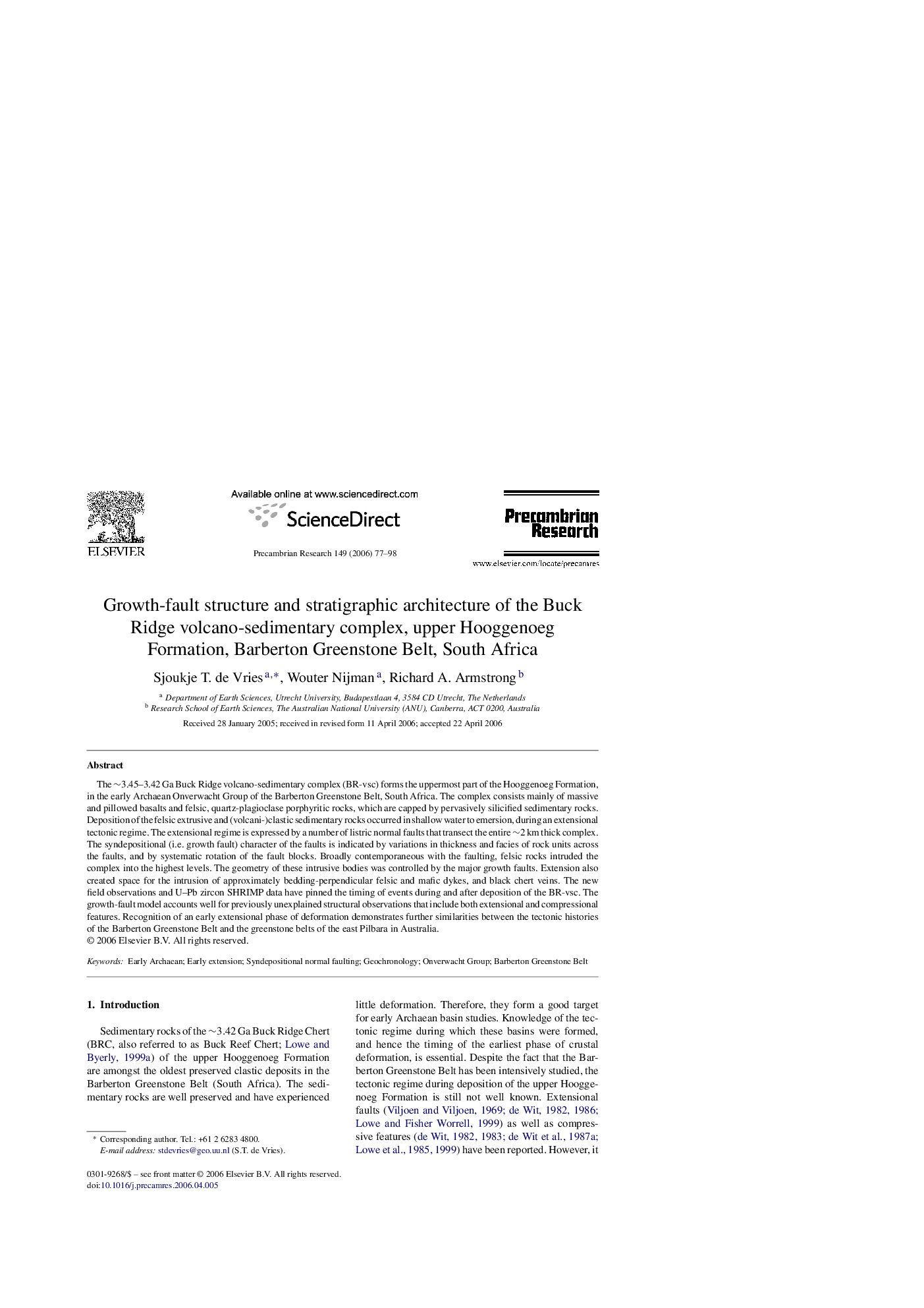| Article ID | Journal | Published Year | Pages | File Type |
|---|---|---|---|---|
| 4724657 | Precambrian Research | 2006 | 22 Pages |
The ∼3.45–3.42 Ga Buck Ridge volcano-sedimentary complex (BR-vsc) forms the uppermost part of the Hooggenoeg Formation, in the early Archaean Onverwacht Group of the Barberton Greenstone Belt, South Africa. The complex consists mainly of massive and pillowed basalts and felsic, quartz-plagioclase porphyritic rocks, which are capped by pervasively silicified sedimentary rocks. Deposition of the felsic extrusive and (volcani-)clastic sedimentary rocks occurred in shallow water to emersion, during an extensional tectonic regime. The extensional regime is expressed by a number of listric normal faults that transect the entire ∼2 km thick complex. The syndepositional (i.e. growth fault) character of the faults is indicated by variations in thickness and facies of rock units across the faults, and by systematic rotation of the fault blocks. Broadly contemporaneous with the faulting, felsic rocks intruded the complex into the highest levels. The geometry of these intrusive bodies was controlled by the major growth faults. Extension also created space for the intrusion of approximately bedding-perpendicular felsic and mafic dykes, and black chert veins. The new field observations and U–Pb zircon SHRIMP data have pinned the timing of events during and after deposition of the BR-vsc. The growth-fault model accounts well for previously unexplained structural observations that include both extensional and compressional features. Recognition of an early extensional phase of deformation demonstrates further similarities between the tectonic histories of the Barberton Greenstone Belt and the greenstone belts of the east Pilbara in Australia.
